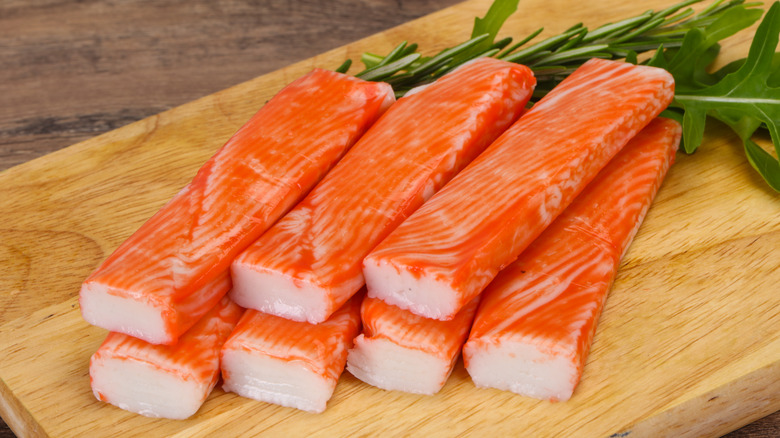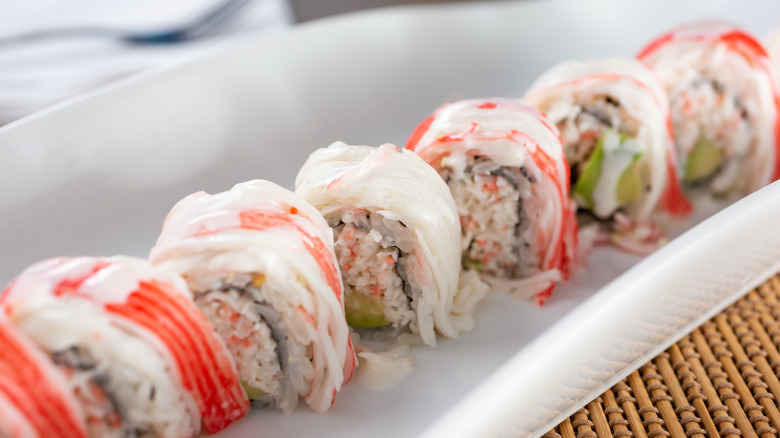Here's How To Tell If Your Crab Meat Is Real
You may scoff at grocery store patrons who hold up the aisle while they pore over nutritional facts and ingredients, but if you want to detect the difference between real crab meat and its imposter, your best course of action is to become a label reader. According to Southern Living, "imitation crab is often labeled as 'crab sticks' or 'krab,' if not clearly marked as 'imitation.'" (Restaurant menus will also sometimes note it as krab as well).
There may be circumstances in which it is not clearly indicated on the product container, and that's when you must become the person you mock at the grocery store and delve into the minutiae of individual ingredients.
Identifying whether something is processed crab or imitation meat is easy because there should be only 2 ingredients listed for the former: crab and water. The latter will feature a "litany of ingredients." Conspicuous in its absence in that copious list of imitation crab ingredients is crab itself. As Healthline relates, "other than a tiny amount of crab extract that is sometimes added for flavoring," you won't find even a sprinkling of claw meat in your imitation crab.
Imposter krab
If the fact that imitation crab meat is sometimes spelled with a "K" didn't already give it away, krab is not really crab meat at all, but a seafood paste (yum!) often called surimi. Chowhound glumly notes that it is a "puree of whitefish, generally Alaskan pollock, which is cooked," and then ground into a paste, "along with glutinous fillers, additives, and other nefarious ingredients like corn, sugar, starches, and seasonings." Krab is often referred to by the pejorative term the "hot dog of the sea" due to the plethora of fillers and preservatives it contains (via Healthline).
After being pulverized into a malleable paste, like Play-Doh, surimi is then molded into different shapes and dyed orange to "mimic" the texture and color of crab meat. The invention dates back to the 1970s when Japanese chefs were looking for a way to utilize leftover fish, and before long imitation crab became a culinary mainstay, a cheaper alternative to crab used in sushi, seafood salads, and spreads.
As referenced above, imitation crab meat, although not made from its crustacean namesake, is still technically seafood. Additionally, it does carry the benefit of a more affordable price tag than actual crab. However, there's a reason why imitation crab is typically blended in with a ton of other ingredients rather than served as a stand-alone item: when it comes to taste, there's nothing like the real thing.

